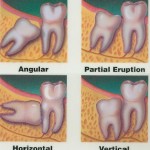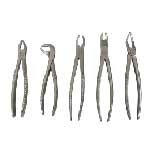
Tooth extraction is the permanent removal of a tooth from its bony socket. For most people, it is not a very pleasant experience. Some people even go through great lengths to avoid it, when in fact, it is actually just a minor procedure that rarely causes many complications.
When are tooth extractions required?
Teeth need to be removed for a variety of reasons: the tooth itself is diseased, the tooth is involved in disease affecting surrounding tissues, or the tooth is in the wrong place. Below are some examples:
- Severe tooth decay
- Broken teeth
- Impacted teeth
- Nonfunctional or malpositioned teeth
- Gum disease
- Dental abscess (swollen area with acculumation of pus)
- Teeth involved in cysts or tumors of the jaws
- Orthodontic reasons – to create space for alignment of other teeth
- Prosthetic considerations – to fit fixed or removable dentures
- Root resorption
- Abnormalities of tooth development
A tooth is usually extracted as a last resort when it is damaged beyond repair, even with various restoration methods like fillings, for instance by dental caries (tooth decay), or a bad accident that breaks half the tooth off.
Another common reason for tooth extraction is wisdom tooth impaction, when the wisdom tooth (permanent third molar)occludes in such a way that it causes pain to the individual. This can irritate the gum and cause pain and swelling. It can also result in food being trapped in that area, which is difficult to clean, resulting in tooth decay. It might also affect the adjacent teeth. Most of the time, it is advisable to remove the third molar to maintain the alignment of other teeth. After all, it is often nonfunctional. Wisdom teeth usually erupt around the age of 17.
Orthodontic treatment is also a reason for tooth extraction. When there is overcrowding, some teeth would need to be removed to make space for other teeth.
Reasons NOT to extract a tooth
Sometimes, a single tooth extraction may cause the overall tooth alignment to shift, and interfere with chewing of food. In this case, an artificial replacement might be required, which could incur even more costs than not extracting the tooth in the first place.
What are the instruments used in a tooth extraction?
The instrument required for a simple extraction is a pair of forceps. Apart from forceps, elevators are also used. They differ from forceps in the matter they enable force to be applied to the tooth. Forceps allow the operator to grasp the tooth and apply a force directly to the tooth in the jaw. An elevator applies force between the tooth and the surrounding bone of the jaw. It exerts less directional control on the tooth. In this way the root tends to move along its own path of withdrawal, and may therefore be less likely to fracture, whereas forceps dictate the direction of movement.
For more complicated procedures such as minor oral surgery (MOS) for removal of wisdom teeth, a more extensive array of instruments for raising and replacing soft tissue flaps as well as cutting bone is needed.
Procedure of a tooth extraction
- The dentist rubs a cotton bud soaked in anesthetic around the tooth.
- The dentist injects anesthetics into the gums around the tooth.
- Wait for the anesthetic to act. It usually takes less than 15 minutes.
- The gums around the tooth are carefully peeled away so that the flesh does not attach to the tooth during extraction.
- The tooth is gripped firmly and rotated in a figure 8 pattern.
- After much tugging the tooth becomes loose, and the dentist is ready to pull out the tooth.
- The tooth is carefully removed and the area cleaned.
- Wet cotton gauze is placed over the tooth socket. Apply pressure by biting down on it for the next 30 minutes to encourage the formation of a stable blood clot.
What should I do after the extraction?
- Keep the cotton gauze in place and try not to talk or open the mouth for the first 30 minutes.
- Do not rinse your mouth for at least 4 hours.
- Rinse the mouth with warm salt water to clean and soothe the mouth 4 times a day, starting the day after extraction. It is also said that the salt water reduces swelling and may help to prevent infection.
- Consume soft food.
- Avoid hot food at first to prevent further bleeding.
- Be careful while brushing your teeth so as not to affect the wound.
- Take analgesics such as paracetamol or ibuprofen if necessary (usually prescribed by dentist)

